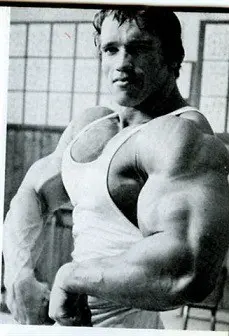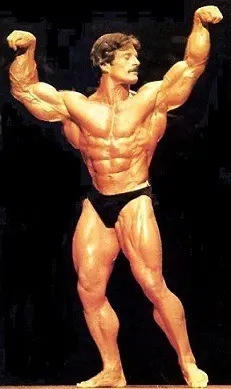The history of bodybuilding could, theoretically with tongue in cheek, begin with a cave man lifting heavy rocks to develop the strength to carry a freshly killed mammoth’s leg or to drag his well-fed wife by the hair…. OK, maybe that never happened.
Or did it?
Classic Muscle from Rocks to Bulls to Iron
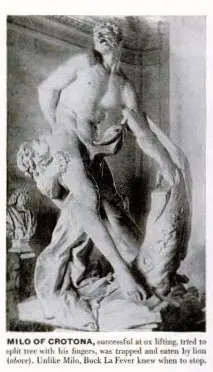
Now before you run out to the cattle auction let’s move several thousand years through the history of bodybuilding to find the great muscle pioneer Eugen Sandow. Sandow may have been the first strongman to combine great strength with a beautiful physique. Sandow, with Flo Ziegfeld’s help, created a Vaudeville act that showcased his classic muscle physique. This made him famous and quite rich.
Sandow used his fame and money to found a school of physical instruction. He wrote books and, in another milestone in the history of bodybuilding, invented what may be the first exercise machine since the rock. It was called the “combined developer” which he sold to fans hoping to build their own Herculean physique.
Here Sandow explains his “machine” from his book, Strength and How to Obtain it, published in 1897.
Level Up Your Fitness: Join our 💪 strong community in Fitness Volt Newsletter. Get daily inspiration, expert-backed workouts, nutrition tips, the latest in strength sports, and the support you need to reach your goals. Subscribe for free!
…after considerable experience and exhaustive experiments with rubber machines, I have succeeded in inventing one which allows a combination of dumbbells and rubber exercises….This developer can be regulated as to prove equally beneficial to the weak man as to myself…. the detachable rubbers and handles allow of the machine to be fixed up to any weight so that as one becomes stronger, one has ample scope for increasing one’s strength.
The complete bodybuilding set, which included nickel-plated dumbbells and photographic wall chart, sold for 12 shillings and 6 pence. That’s over 70 dollars in today’s currency! Eugen had become a bodybuilding entrepreneur and set the stage for many that would follow.
As we motor along our continuum of the history of bodybuilding, we speed past such luminaries as strongman, George Hackenschmidt, Apollo the Scottish Hercules, and Bernarr “weakness is a crime” Macfadden. We arrive in 1922 where Angelo Siciliano is changing his name to Charles Atlas!….
Don’t be a 97lb weakling!
Charles Atlas’ “Dynamic Tension” routine and wide spread advertisements encouraged many thousands of young men to build their physiques. Who can forget those ads showing that poor scrawny kid getting sand kicked in his face?
Those classic muscle ads can be seen in print even today. Atlas’ advertising made millions and set the tone for future bodybuilding entrepreneurs to come.
Chronicling The History of Bodybuilding
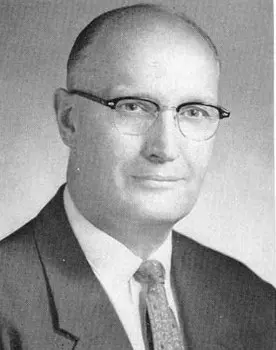
He sold them for 10 cents, never imagining that 70 years later one would sell on eBay for $2,807! Although not the first muscle magazine,” Rader’s was one of the best.
Peary’s Iron Man magazine was known for impartial reporting and common sense articles geared toward the average man and champion bodybuilder alike. He would continue publishing Iron Man for 50 years, finally selling to bodybuilder and photographer John Balik in 1986. Peary passed away at 82 years of age on November 24, 1991.
Teen Dynamo!
Coming just after Rader in the history of bodybuilding publishing was a teenage super entrepreneur named Joe Weider. Joe has said he was started on his journey in bodybuilding by a picture of the great John Grimek in Strength magazine. Strength was published by Alan Calvert’s Milo Barbell Company.
With Grimek’s picture seared in his memory, Weider began publishing his magazine, Your Physique at 17 in his parents’ living room. He eventually built a publishing and supplement empire that continues today.
More muscle magazines emerged as physique building became more popular. Bob Hoffman’s Strength and Health, Muscular Development, Dan Lurie’s Muscle Training Illustrated, and Robert Kennedy’s Muscle Mag International brought bodybuilding to the masses through subscriptions and news stands.
It’s through these magazines that the history of bodybuilding begins to be documented. Each month the results of the various Mr. America, Mr. Universe, and later the Mr. Olympia contests were published for growing numbers of fans around the world. Many state and local bodybuilding and weightlifting contests sprouted up during this time.
Mine’s Bigger than Yours!
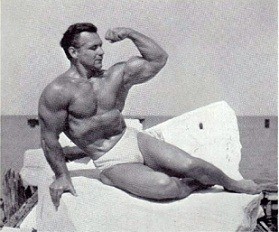
a bodybuilding competition with the winner given the title of America’s Best Built Man. The bodybuilding contest was soon named the Mr. America Contest. The winner of this title was considered the best physique in the land. John Grimek dominated the early Mr. America contests, winning in 1940 and 41 and was considered by many to be unbeatable. Grimek’s physique still inspires to this day. Initially, the Mr. America contests also included athletic points for lifting with were eliminated as time went by.
In 1947 a young Mr. America named Steve Reeves brought the concept of size and symmetry to a new level. Steve, with his classic muscle, is still considered by
many today to have the perfect bodybuilding physique. His sculpted body coupled with rugged good looks attracted the attention of Italian film makers. Reeves starred in the first Hercules movies and other European films.
 The Sincerest Form of Flattery…
The Sincerest Form of Flattery…
Following the success of the AAU Mr. America contest, other bodybuilding organizations cropped up with their own national physique competitions.
Level Up Your Fitness: Join our 💪 strong community in Fitness Volt Newsletter. Get daily inspiration, expert-backed workouts, nutrition tips, the latest in strength sports, and the support you need to reach your goals. Subscribe for free!
The National Amateur Bodybuilder’s Association, NABBA, began the Mr. Universe contest and later a professional Mr. Universe. Many European champions earned their fame capturing this coveted crown. Reg Park was one such champion. His success in the bodybuilding contests, due to his massive build, earned him the title roles in several Hercules movies of his own.
Ben Weider’s International Federation of Bodybuilders, the IFBB, started their own series of contests including their own version of Mr. America, Mr. Universe, and the now pinnacle Mr. Olympia contest.
The Mr. Olympia is considered the highest crown in all of the bodybuilding. The winner is known as the king of the bodybuilding world. The great Larry Scott won the inaugural event in 1965. He brought a new dimension of mass, symmetry, and definition to the physique world.
A Bitter Pill to Swallow
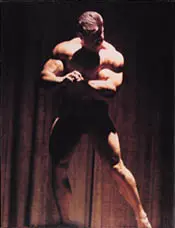
Ziegler experimented with his new concoction on weight lifters at the York Barbell Club in Pennsylvania. Soon the underground “secret” spread into the bodybuilding scene forever changing the world of classic muscle.
A period of innocence and ignorance followed as physiques exploded with this new found secret. Side effects weren’t well understood, and all was right with the
world.
The Iron Age of Bodybuilding Was in Full Swing
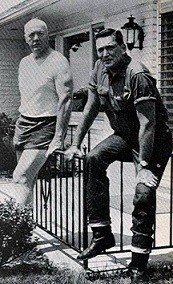
Barbells, dumbbells, and benches sold by the ton. New machines and bodybuilding supplements began appearing with the promise of better and faster muscle gains.
Vic Tanny’s gyms were popping up around the United States. His bright, shiny, and clean fitness facilities attracted a broader market. He was a pioneer in the fitness gym industry.
Arthur Jones and his Nautilus Machines brought science and engineering into the world of iron and sweat. Huge new physique stars like Casey Viator were used by Jones and others to promote these new devices.
Classic muscle magazines kept progressing. Profiles of new title holders, with their unbelievable measurements and training routines, filled the pages creating stars that seemed larger than life. The images of pro bodybuilders like Dave Draper, Frank Zane, and Bill Pearl mesmerized the readers including this writer. Images of classic bodybuilders promoting this gadget or that protein drink are still etched fondly in the minds of many.
Forged From Iron….a Bodybuilding Star is Born
As fantastic as these bodybuilding icons were, though, bodybuilding was still a small and misunderstood niche of a world. It was not until Joe Weider “discovered.” a twenty-year old Mr. Universe named Arnold Schwarzenegger and brought him to America that bodybuilding would have a personality that would vault the sport into the mainstream.
Schwarzenegger’s charisma, work ethic, and focused drive were captured in the Charles Gaines and George Butler’s 1974 book and 1977 film documentary, Pumping Iron. The history of bodybuilding would be forever changed!
Check the interview with George Butler here!
“Pumping up. Pumping Iron!”

Schwarzenegger had won five Olympias before this one. Having vanquished Sergio Oliva’s “Myth” status in his previous wins, Arnold, retired from the sport, set his sights on Hollywood as America began to embrace him and bodybuilding. Schwarzenegger came back in 1980 to win an unprecedented, and very controversial, 7th Mr. Olympia title. In the history of bodybuilding, no one had dominated the sport like Arnold. With that win under his belt, he finally ended his competitive bodybuilding career for good.
A string of great action films kept him busy though and in the late 80’s Arnold began promoting his own bodybuilding contest. The Arnold Schwarzenegger Classic the contest is still held every year in Columbus, Ohio and is considered one of the most important bodybuilding contests behind the Mr. Olympia.
Bodybuilding Explodes!
In the wake of Arnold, everyone wanted to “pump iron”. In the late 70’s and 80’s gym memberships soared and being pumped was now in style. Bodybuilding became more accepted as a hobby for the common person. The concept of being “muscle bound” was thrown out the window as more and more athletes improved their performance by building up in the gym.
As more men and women came to the sport with favorable genetics and the use of the not-so-secret any more anabolic steroids, the physiques skyrocketed to unreal size and muscularity. New names in the late 70’s and 80’s such as Mike Mentzer, Tom Platz, and Lee Haney dwarfed previous generations. They began pushing the limits of muscle mass and losing sight of classical Greek ideals.
Hey! What happened to bodybuilding?
As we near the end of our journey through the history of bodybuilding, we arrive in the late 80’s and early 90’s to find that bodybuilding has lost its way. In 1991, 8 time Mr. Olympia Lee Haney retired and with him the link to the classic muscle of the Iron Age. The graceful, tight waisted physiques of old gave way to the monstrous and outrageous bodies of Dorian Yates, Ronnie Coleman, and current Mr. Olympia Jay Cutler. Who can really be inspired by what is seen in the magazines of today?
Who will follow these men and what kind of physique will they possess to continue the history of bodybuilding is anyone’s guess. Will bodybuilding return to the kind of classic muscle that mesmerized me as a youth? Or will the physiques continue to balloon unchecked into oblivion?
There have been many wrong turns in human history. The history of bodybuilding is no exception. It is the intention of Iron Age to help steer the course of bodybuilding back to its former glory by reminding people of its great past. Only when hard work, determination, and a healthy lifestyle are once again associated with this activity can this be. By focusing on these core principles maybe we all can have an impact on the future history of bodybuilding.



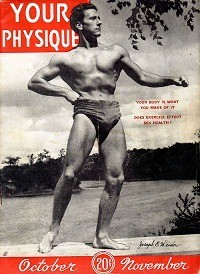
 The Sincerest Form of Flattery…
The Sincerest Form of Flattery…